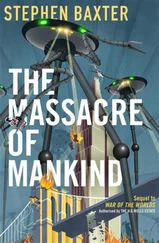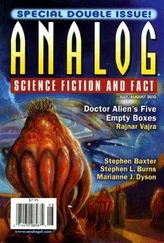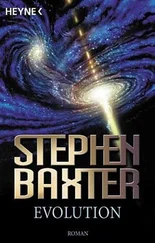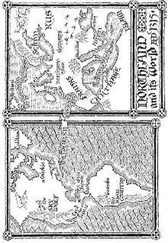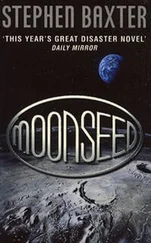It was the first time she’d mentioned any detail of her parents. ‘She did?’
‘She said she’d always felt like a child herself, a child who had grown up in the halls of some vast and dusty museum, where everything was frozen and on display, out of her reach … Look, Symat, if you do have some purpose, it must be important.’
‘But if I’ve got no choice about any of this, what is there for me ?’
She thought about that. ‘Dignity?’ She stood up. ‘Come on. Let’s go and wind up the Curator. I want to know what kind of underwear he has on under that stupid robe.’
Laughing, they left the cabin.
Saturn loomed out of the dark.
This wasn’t like approaching Port Sol. They had come swooping down on that much-engineered little worldlet in a flash. The largest surviving planet in Sol system, Saturn was majestic and stately, a misty disc painted red by the sun. Its size was obvious, oppressive.
The ship hurled itself through Saturn’s tremendous shadow. Symat saw lightning crackle purple and white across the clouds, as storms that could have engulfed the whole of Mars played themselves out. This was the power of nature, he thought, even now dwarfing humanity and its dreams. As he watched, Symat’s heart pumped in a kind of retrospective panic. To think that he might have lived and died on Mars, or even followed his parents into a booth, without seeing such wonders as this!
The flitter swooped away from Saturn, climbing up and out of its deep gravity well, the energy of its incoming trajectory dumped. And the Curator showed Symat how to look for the moons.
Spacegoing mankind had swept like a storm through Sol system, shattering in a few millennia the patient geological assemblings of aeons. Saturn’s ice moons, if not taken apart altogether, had been extensively mined. One moon was more interesting, though. The Curator called it ‘Titan’. Once this small world had had decks of clouds beneath which complex chemical processes had played out; humans had sent scoop-ships and trawlers to mine the air and the hydrocarbon seas. But Titan, starved of heat, had never spawned life. Now, as the sun brightened, Titan was at last stirring from its chill slumber. It was a marvellous prospect, the birth of a new world right in the middle of Sol system: even in these desolate latter days you could still find new life. But no human scientists were studying the miracles unfolding in Titan’s clouds. This was not an age for science.
They left Titan behind. And as the flitter continued to swoop around Saturn’s gravity well, the true human purpose of this system was gradually revealed.
‘Can you see?’ The Curator ducked and pointed, picking out lights scattered among the moons. ‘And that one? They are drones. Sensor stations, weapons platforms. All sentient.’
The sky was full of them, machines that flocked like metallic birds in the ever-changing gravity field of Saturn and its moons. Some of them gathered into rings that girdled Saturn’s equator, which the Curator wistfully said were an echo of an even stranger wonder of the past, natural rings of ice and dust that had long been disrupted by war. And once you could have seen even more spectacular artefacts, the ruins of wormhole mouths, the remnant of a transit system that had once spanned a Galaxy but had collapsed with the demise of its builders, the Coalition.
But Symat understood that the beauty of the weapons clouds wasn’t their point. Their purpose was lethality. The whole of the Saturn system was a fortress. And it was all because of the Ascendents.
When the vast retreat of man had begun, even when only the most remote of colonies had yet been evacuated, the undying with their eerie far-flung prescience had planned the end game. Before the siege of Earth itself began, it would be necessary to make a stand.
Saturn had always been a military stronghold. As long ago as the Exultants’ heroic effort to win the Galactic Core, huge war machines had been buried in the planet’s deepest clouds, ready to leap to the defence of Earth if any foe dared attack the capital planet. These brooding machines, self-maintaining, self-enhancing, became known as the Guardians.
Now, as a far more formidable foe gathered, the Ascendents turned to Saturn once more. Earth itself was to be corralled with gravitation and brought out here, to circle on the rim of Saturn’s mighty gravity well, where it could be protected. And the war machines under those clouds, already powerful, were enhanced with the accumulated learning of a million years of interstellar war.
The purpose of the undying had been unswerving. But this project was not quite as under their obsessive control as they would have preferred. There was risk.
‘I don’t understand,’ Mela said. ‘What risk?’
The Curator waved a hand, and the air was filled with a high-speed chatter of automated signals. Symat thought he picked out questions and responses, handshaking, a kind of dialogue. The Curator said, ‘The Guardians are very old. They have long since got used to making their own decisions. When a ship like this comes sliding into their space, they get very suspicious. Can’t you tell, from the way the drones are swarming around us? All that’s keeping us from being destroyed right now is our flitter’s responses to the Guardians’ continual interrogation.
‘And when the Ascendents decided to move Earth here – Lethe, a whole planet sliding across Sol system – one false word and the home of mankind might have been blown to bits by machines meant to protect it.’
Symat said, ‘We’ve been at war with the Xeelee for a million years. What can these Guardians have that’s so powerful it could make a difference now? And why hasn’t it been thrown into the war before?’
‘I think I can answer that.’ Mela’s eyes clouded, and there was a sheen about her face, a waxy unreality. She screwed up her forehead as she tried to integrate the information pouring into her head.
Long ago, as mankind advanced across a Galaxy, under a purposeful programme called the Assimilation, whole alien cultures were eradicated or subsumed, their technology and learning purloined. Most such treasures, as Symat had guessed, had been thrown into the vast war effort. But some had been secreted away by the patient undying. Insurance for the future, they thought of it.
One such was the technology called the Snowflake. It had been found in orbit around an ancient star in a globular cluster out in the Galaxy’s halo. It was a stunning artefact, a regular tetrahedron measuring over fourteen million kilometres along its edges. Humans gave it this name because like a snowflake the structure had a fractal architecture, with the tetrahedron motif repeated on all scales. And the Snowflake, it was discovered, was full of information: it was an iron-wisp web of data, a cacophony of bits endlessly dancing against the depredations of entropy.
The Snowmen, the human label for the vanished builders of this lacy monster, had an utterly alien motivation. The Snowmen decided that to record events – and only to record – was the highest calling of life. They took apart their world and rebuilt it as a monstrous data storage system. After that they watched time unravel – and waited for the universe to cool, so they could capture even more data.
Thus the Snowflake had hung in space for thirteen billion years. Then, during the Assimilation, a human ship came.
The Navy crew, intent on plunder, had been unsubtle – but their ship had been devastated by an unexpected blow, broken apart by a beam of directed gravity waves.
It had taken some time to work out what had happened, how the Snowflake had struck back.
Mela lacked the vocabulary to express the concepts downloading into her mind, and she looked at the Curator. Reluctantly, he closed his eyes, and began to speak deliberately. ‘There is a profound principle at work. Once it was known as the Mach principle. Mach, Marque, something like that. Every particle in the universe is linked to every other. That is why inertia exists; when you push something, the universe itself drags it back.’
Читать дальше


